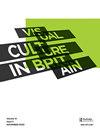《天佑青翠:威廉·布莱克和雷·戴维斯对想象怀旧的运用
Q2 Arts and Humanities
引用次数: 3
摘要
本文考察了布莱克对我们理解某种劣等“英国性”的重要性,这种劣等“英国性”以“想象的乡愁”和对当地的依恋为特征,以乡村绿色的比喻为例。它比较了布莱克和雷·戴维斯以及奇想乐队作品中绿色的表现,以证明将地方(绿色)重新归类为国家(英国)所带来的政治后果。本文章由计算机程序翻译,如有差异,请以英文原文为准。
God Save the Ecchoing Green: The Uses of Imaginary Nostalgia in William Blake and Ray Davies
This article examines Blake’s importance for our understanding of a certain type of subaltern ‘Englishness’ which is characterised by ‘imaginary nostalgia’ and an attachment to the local, and exemplified by the trope of the village green. It compares representations of the green in the work of Blake and Ray Davies and the Kinks in order to demonstrate the political consequences which attend the reinscription of the local (the green) as the national (Englishness).
求助全文
通过发布文献求助,成功后即可免费获取论文全文。
去求助
来源期刊

Visual Culture in Britain
Arts and Humanities-Visual Arts and Performing Arts
CiteScore
0.60
自引率
0.00%
发文量
1
 求助内容:
求助内容: 应助结果提醒方式:
应助结果提醒方式:


